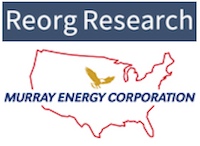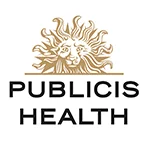A New York State court ruling on the parameters of the state’s Shield Law, which safeguards the anonymity of confidential sources, has profound implications on freedom of the press, according to a new report released by The Dilenschneider Group.
The Feb. 14 decision in the case of Murray Energy Corp. v Reorg Research Inc. “weakens the legal wall protecting a free press,” the report says.
 |
In the case, MEC, a privately held coal company in the midst of a corporate restructuring, demanded that RRI, a firm that furnishes real-time news, commentary, and analysis to lawyers and distressed-debt investors, release the names of anonymous sources RRI spoke with in the course of publishing several articles about MEC.
The coal company suspected that some of those sources were members of an investor group who had been granted access to proprietary information, which entailed their signing legally enforceable confidentiality agreements. If they had provided RRI with any of that information, it would have left them open to prosecution on breach of confidentiality charges.
The court sided with MEC, the decision primarily resting on its opinion that, since the news provided by RRI was limited to paid subscribers, and not available to the general public, RRI was not protected by the Shield Law, and was legally obligated to divulge the names of the sources. RRI, however, was granted a stay, and its sources will remain protected through the appeals process.
Dilenschneider's report takes the court to task for its narrow interpretation of the Shield Law’s scope, which it says endangers the entire news gathering industry.
Citing the Obama Administration’s tough stance as regards government officials who talked to reporters about national security issues, as well as the highly adversarial relationship the Trump Administration has struck up with reporters, the report sees the court’s decision as a harbinger of difficulties for the American press. “The nation may be in for a dangerous time when it comes to the free flow of information,” it concludes.


 Mike McNamara, the former US CEO of Dentons, has joined Baretz+Brunelle, which serves the legal economy, as its first CEO.
Mike McNamara, the former US CEO of Dentons, has joined Baretz+Brunelle, which serves the legal economy, as its first CEO. Publicis Health has agreed to shell out $350M to settle claims that its predatory and deceptive marketing for Purdue Pharma designed to increase sales of OxyContin helped fuel the opioid crisis, according to New York attorney general Letitia James.
Publicis Health has agreed to shell out $350M to settle claims that its predatory and deceptive marketing for Purdue Pharma designed to increase sales of OxyContin helped fuel the opioid crisis, according to New York attorney general Letitia James. Andrew Garson pled guilty in New York federal court on Nov. 1 to charges that he defrauded his former employers MWWPR and Catalyst PR of millions of dollars. He agreed to pay $3.8M in restitution and could be
Andrew Garson pled guilty in New York federal court on Nov. 1 to charges that he defrauded his former employers MWWPR and Catalyst PR of millions of dollars. He agreed to pay $3.8M in restitution and could be  Chambers puts Reevemark, FGS Global, The Levinson Group, Trident DMG and Brunswick Group at the top of the heap for firms providing litigation PR and communications in its newly released rankings for 2023.
Chambers puts Reevemark, FGS Global, The Levinson Group, Trident DMG and Brunswick Group at the top of the heap for firms providing litigation PR and communications in its newly released rankings for 2023. Gloria Labbad, partner and senior counsel at FGS Global, has joined Heather Podesta’s Invariant as it beefs up its litigation communications unit.
Gloria Labbad, partner and senior counsel at FGS Global, has joined Heather Podesta’s Invariant as it beefs up its litigation communications unit.


 Have a comment? Send it to
Have a comment? Send it to 
No comments have been submitted for this story yet.